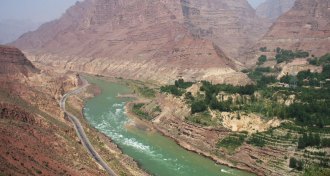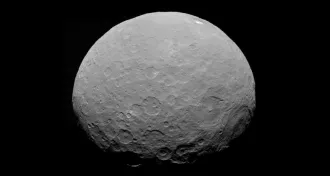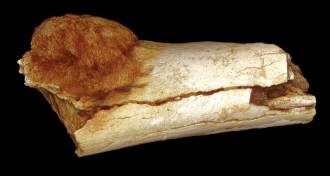News
-
 Earth
EarthChina’s mythical ‘Great Flood’ possibly rooted in real disaster
Folktales of an ancient flood that helped kick off Chinese civilization may reference a nearly 4,000-year-old deluge.
By Bruce Bower -
 Planetary Science
Planetary ScienceCeres is more than just a space rock
Dawn spacecraft reveals that the dwarf planet Ceres hides a core of solid rock beneath an outer crust of minerals, salts and ices.
-
 Animals
AnimalsDiversity of indoor insects, spiders adds to life’s luxuries in high-income neighborhoods
A massive survey of indoor spiders and insects in town finds dozens of different scientific families in homes, more in high-income neighborhoods.
By Susan Milius -
 Neuroscience
NeuroscienceRunning doesn’t make rats forgetful
Running doesn’t seem to wipe out old memories in rats, concludes a new study that contradicts earlier reports suggesting that exercise does actually help old memories fade and new memories form — in other rodents.
By Meghan Rosen -
 Anthropology
AnthropologyOldest evidence of cancer in human family tree found
Bony growths on fossils may push origins of this disease way back in the Stone Age.
By Bruce Bower -
 Paleontology
PaleontologyWoolly mammoths’ last request: Got water?
Woolly mammoths survived on an Alaskan island thousands of years after mainland mammoths went extinct. But they died out when their lakes dried up, thanks to a warming climate and rising sea levels.
-
 Archaeology
ArchaeologyParasitic worm eggs found on Silk Road latrine artifacts
Microscopic study of latrine finds indicates disease spread along ancient Asian trade route.
By Bruce Bower -
 Neuroscience
NeuroscienceGift-giving brain cells are lifeline to injured nerve cells
After an injury, astrocytes give nerve cells a gift of mitochondria, mouse study suggests.
-
 Life
LifeHuman eye spots single photons
Human eyes are sensitive enough to detect individual particles of light.
-
 Life
LifeDistinctions blur between wolf species
Red and eastern wolves might be gray wolf/coyote blends instead of distinct species
-
 Earth
EarthNew scenario proposed for birth of Pacific Plate
The Pacific tectonic plate formed at the junction of three other plates and above of the remains of a submerged plate, geophysicists propose.
-
 Life
LifeThe nose knows how to fight staph
A bacterium isolated from the nose produces a new antibiotic active against resistant pathogens.
By Eva Emerson